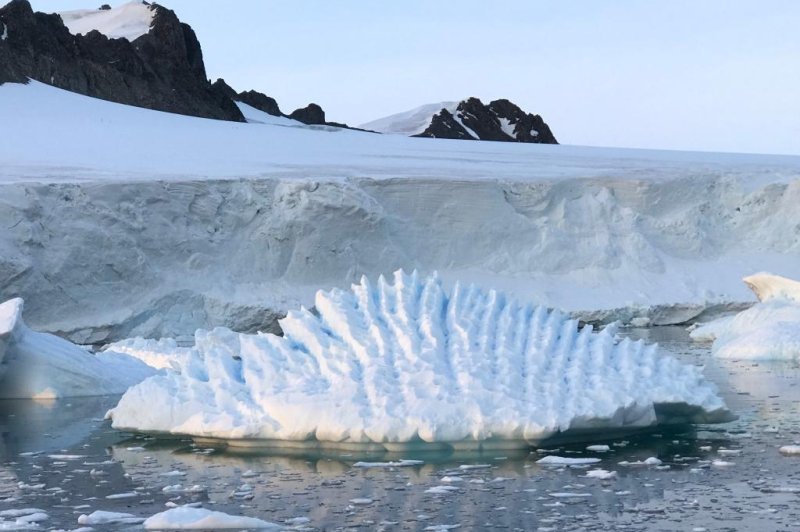Nearly a quarter of West Antarctica's ice is unstable and climate change is to blame, according to a new study. Photo by Andrew Shepherd/AGU
May 17 (UPI) -- West Antarctica's glaciers are increasingly vulnerable to collapse, according to a new survey of the Southern Continent's ice.
According to the latest calculations of scientists at the Center for Polar Observation and Modelling, based at the University of Leeds, some 24 percent of West Antarctica's ice is unstable.
Scientists used computer models to analyze some 800 million measurements of ice height collected by a combination of satellites. The data showed nearly a quarter of West Antarctica's ice sheet is thinning. Over the last few decades, melting rates have accelerated across much of the ice sheet.
Researchers used simulations to determined how much of West Antarctica's thinning is due to climate change and how much is to blame on weather variability. For each simulation, scientists tweaked the snowfall totals and studied the impacts on glacial thinning and stability.
"Knowing how much snow has fallen has really helped us to detect the underlying change in glacier ice within the satellite record," Andy Shepherd, a polar scientist at the University of Leeds, said in a news release. "We can see clearly now that a wave of thinning has spread rapidly across some of Antarctica's most vulnerable glaciers, and their losses are driving up sea levels around the planet.
The analysis showed depressed snowfall totals can boost thinning for brief periods of time -- even across large areas -- but that increases in ocean temperatures have a more dramatic impact on the health of glaciers along the coast of West Antarctica.
The new findings -- published this week in the journal Geophysical Research Letters -- show warming surface waters explain the increase in instability across the West Antarctic ice sheet.
While changes in snowfall totals triggered slight changes across wide areas, melting and calving accelerated by climate change has driven dramatic changes, with some glaciers -- like the Pine Island and Thwaites glaciers -- losing ice five times faster than they were a few decades ago.
The new analysis showed ice losses in Antarctica have contributed 4.6 millimeters in sea level rise since 1992. If instability continues to spread across West Antarctica and its glaciers, sea level rise is likely to accelerate.















